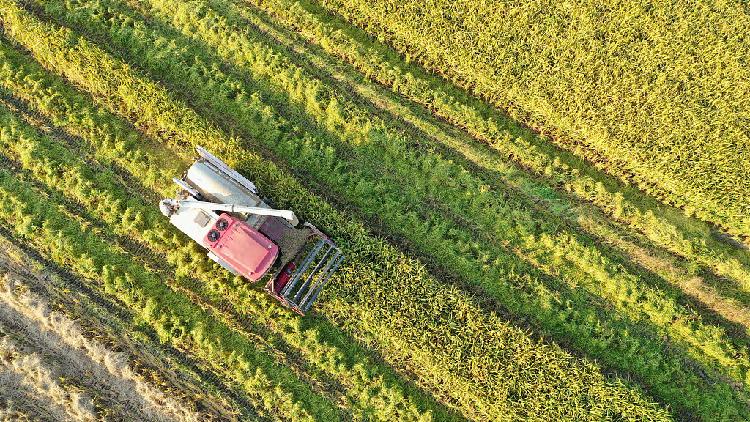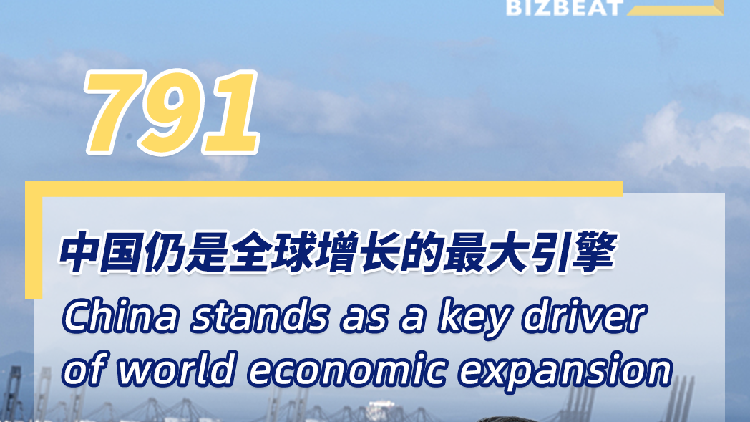Editor’s note: Tang Lixia is deputy secretary-general and professor at the National Institute for Rural Vitalization Studies, China Agricultural University. The article reflects the author’s opinions and not necessarily the views of CGTN. It has been translated from Chinese and edited for brevity and clarity.
Recently, China’s National Bureau of Statistics released the country’s 2023 economic data. The data revealed that rural residents’ per capita disposable income reached 21,691 yuan ($3015.8), registering an increase of 1,558 yuan from the previous year and a growth rate of 7.6 percent. With it, the steady goal of elevating farmers’ income has become a reality.
China’s No. 1 central document for 2004 suggested boosting farmers’ income through the enhancement of their operational income by increasing policy-oriented transfer subsidies for farmers, raising wage income for migrant workers, adjusting agricultural structures, and invigorating the circulation of agricultural products. The No. 1 central document for 2016 explicitly proposed to increase farmers’ property income by deepening the reform of rural collective assets as well as utilizing and revitalizing idle homesteads. Corresponding policy tools have been introduced, producing further positive effects. Over the past two decades, farmers’ income has consistently grown at a high rate.
Firstly, concerning operational income, the proportions of the secondary and tertiary industries continue to rise. In the past few years, rural infrastructure conditions have been continuously improved, and public supporting service systems have been gradually formed. Through investments in the improvement of living environments and rural construction, governments across regions have accelerated the development of a green, peaceful, and beautiful countryside, laying the foundation for the development of new business forms integrating rural culture and tourism and those integrating primary, secondary, and tertiary industries.
Secondly, regarding wage income, starting from 2015, wage income has taken up a greater proportion of farmers’ income than the operational income. Wage income primarily comes from farmers working outside their hometowns, and the scale of migrant workers has continued to expand. This is largely attributed to the various supportive policies to guide migrant workers to work outside their hometowns in an orderly manner in recent years. Such policies include providing transportation subsidies and implementing incentive plans for employment; establishing various forms of employment service stations, such as the “employment stations” for migrant workers in Hainan Province; and cultivating and developing labor brands, such as “Pu’er Barista” in Yunnan Province. In addition, emphasis has been placed on skills training for migrant workers in order to raise their income levels. In 2023, the monthly wage of migrant workers was 4,780 yuan, up by 3.6 percent over the previous year.
Thirdly, in terms of property income, the rural collective property rights system has laid the institutional foundation for villagers to obtain property income. In recent years, various regions have established village collective asset operation companies, set up cooperatives, and hired rural professional managers to revitalize village collective assets. All these initiatives have propelled the development of village collective economies and boosted farmers’ income through share dividends. Some villages have significantly improved rural environment and development conditions through village construction, attracting social capital to the villages, increasing the value of idle rural assets, and realizing their market value, thus promoting the growth of farmers’ property income. Farmers’ property income has consistently maintained a growth rate of around 10 percent in recent years.
Fourthly, examining the transfer income, since 2003, a fiscal transfer policy system mainly based on subsidy income has gradually been established, forming a subsidy policy covering the entire industry chain from agricultural production to the market end. Furthermore, basic income guarantees, such as minimum living allowances, have been established for low-income groups. Different types of income subsidy policies have been introduced for orphans, people with disabilities, elderly individuals, as well as other socially disadvantaged groups. These multi-layered and multi-faceted subsidy policies have effectively enhanced rural residents’ transfer income, increasing the proportion of transfer income in farmers’ per capita income from 4.8 percent in 2003 to 20.88 percent in 2022, making it the fastest-growing part of their income.
It can be observed that, due to the combined utilization of various policy tools, the four components of rural residents’ income in China have sustained high growth rates, driving the growth rate of rural residents’ income consistently higher than that of urban residents and narrowing the urban-rural income divide. With the equalized development in infrastructure and public services, advancement in urban-rural integration, enhanced bidirectional flow of resources between urban and rural areas, and the realization of the multifunctionality of agriculture and the diverse values of rural areas, there lies further potential for the growth of rural residents’ income.
(Cover via CFP)




